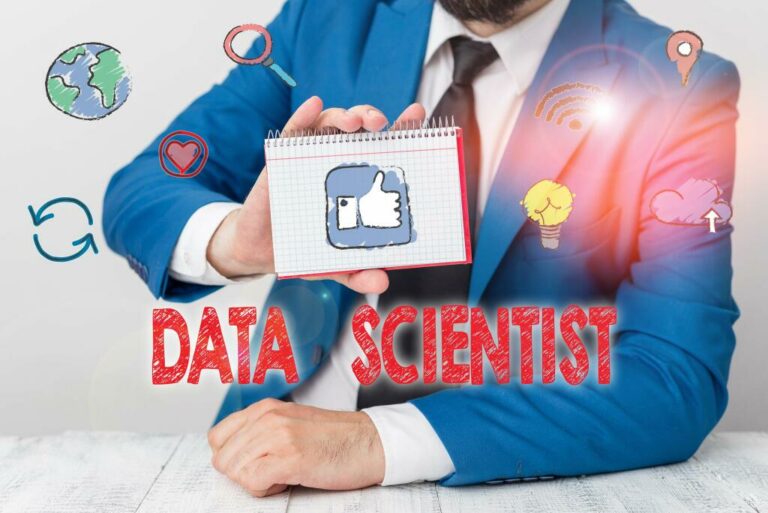System Development Life Cycle Phases Stages in Agile 2022
Content
Information on personnel, money, hardware, facility and their estimated cost must also be available. At this point projected cost must be close to actual cost of implementation. The most creative and challenging phase of the system life cycle is system design, which refers to the technical specifications that will be applied in implementing the candidate system. It’s advantageous for large projects since development teams can create very customized products and incorporate any received feedback relatively early in the life cycle. This can include handling residual bugs that were not able to be patched before launch or resolving new issues that crop up due to user reports.
Lately, the model is widely adopted by organisations, and it is proven to be quite the driving force behind software development. SDLC is used across the IT industry, but SDLC focuses on security when used in context of the exam. Think of “our” SDLC as the secure systems development life cycle; the security is implied.
Custom Software Development
The sixth phase is when the majority of the code for the program is written. Additionally, this phase involves the actual installation of the newly-developed system. This step puts the project into production by moving the data and components from the old system and placing them in the new system via a direct cutover.
- This includes all the specifications for software, hardware, and network requirements for the system they plan to build.
- System development life cycles are typically used when developing IT projects.
- Includes the design of application, network, databases, user interfaces, and system interfaces.
- In both cases, power routing and wireless connectivity are to be prioritized.
- Other models, such as anamorphic development, tend to focus on a form of development that is guided by project scope and adaptive iterations of feature development.
- 7 stages of System Development Life Cycle offer a lot of benefits to development teams who use it properly.
The Waterfall model, one of the earliest SDLC models, is a linear, sequential technique popular in IT product development that emphasises the importance of continually progressing from one stage to the next. Each stage must be completed in its entirety before moving on to the next; once a stage is done, it cannot be revisited. This can include resolving new issues that arise as a result of user reports or dealing with leftover bugs that were not able to be corrected before launch. In comparison to smaller systems, larger systems may require more maintenance phases.
Regardless if the team works with a document of functional requirements or a handwritten list, everyone must be able to understand each proposal, and each comment, to be involved. 7.Tests should prove that the system complies with all design specifications and any required security measures. Superior management oversight throughout the entire development process. The Big Bang model is an outlier among SDLC approaches since it does not adhere to a set process and spends very little time on planning. With this method, you can create a one-of-a-kind product by incorporating consumer feedback from the very beginning of the development process.
The following are the most common System Development Life Cycle models and why you should use them. For example, as the system analyst of Viti Bank, you have been tasked to examine the current information system. Customers in remote rural areas are finding difficulty to https://globalcloudteam.com/ access the bank services. It takes them days or even weeks to travel to a location to access the bank services. The conceptual model that results from OOA will typically consist of a set of use cases, one or more UML class diagrams, and a number of interaction diagrams.
SDLC Phase 9: Disposal
Creating a pre-production version of the product can give the team the opportunity to visualize what the product will look like and make changes without having to go through the hassle of rewriting code. System testing requires a test plan that consists of several key activities and steps for programs, strings, system, and user acceptance testing. The system performance criteria deals with turnaround time,backup,file protection and the human factors. System design consists of both logical design and physical design activity, which produces ‘system specification’ satisfying system requirements developed in the system analysis stage.

At the start of development, there was no idea how the final product would look. Developers must now enter maintenance mode and begin practising any procedures necessary to address issues identified by end users. It explains how each and every aspect of the product, as well as each component, should function. The design stage is required before moving on to the primary developer stage. Unit Testing – takes individual units of software source code and tests them to determine whether they are fit for use. There are different types of system testing such as unit testing, integration testing, functional testing, regression and acceptance testing.
Why Is SDLC Important?
There are various certifications you need to acquire before launching your product into the market. The certificate you need depends solely on which type of product you are establishing. Multiple types of hardware product certifications are there for different markets. It is the mission-critical stage that is quite complicated for devices with a small footprint and appliances that would consume considerable current. In both cases, power routing and wireless connectivity are to be prioritized.

In the first stage, the team decides if a new system is necessary to achieve the strategic goals of the company. This is an early-stage plan or feasibility analysis for the company to acquire the resources needed to enhance an existing service or construct new infrastructure. Next, test the finished products at a high sampling rate and find more issues. At this time, the engineers, designers, and production consultants evaluate the durability of the product over a given period of usage. Such durability test fixtures provide valuable reliability insights followed by an overarching view of the product quality.
Tier 3 Risk Management Activities
Almost two decades later, a book by the same set of authors in general also advocated an eight step series of phases, although the names of the stages changed somewhat . It is interesting to note that nearly 20 years later, the naming conventions used in the newer text are almost synonymous with those in the older work. The Whitten and Bentley text, in its present form, still breaks up the process into eight stages. The SDLC has been a part of the IT community since the inception of the modern digital computer. The system analyst is a person who is thoroughly aware of the system and guides the system development project by giving proper directions. It also includes handling the residual errors and resolve any issues that may exist in the system even after the testing phase.
A system development life cycle is a conceptual model that delineates the stages involved in developing and implementing a system. Each stage is important in the development process and differs from the others in terms of complexity, assets required, and intended functionalities. The Hunter Business School Web Application Design and Development program has a class that teaches the system development Life cycle. When the system successfully implemented and installed into the end user environment then the maintenance stage of SDLC will start. The main aim of this stage is to do regular maintenance of system, add new requirements and necessary updates. A SRS is prepare at the end of requirements analysis phase and the document specifies the functional requirements, development framework, hardware and network requirements.

Larger systems may require longer maintenance stages compared to smaller systems. Different modules or designs will be integrated into the primary source code through developer efforts, usually by leveraging training environments to detect further errors or defects. Perhaps most importantly, the planning stage sets the project schedule, which can be of key importance if development is for a commercial product that must be sent to market by a certain time.
The system development life cycle is crucial for the software development process. Its goal is to provide structure and manage dependencies so that you can deliver a quality product. It also allows everyone to contribute and make decisions based on current knowledge instead of making those decisions later on in the project.
Every stages of system development cycle plays an important role and it helps to develop the system successfully. In this article, we have discussed 7 stages of system development life cycle. If you want to develop a new system for your organization then should develop the system using 7 stages of SDLC.
System Development Life Cycle: Testing And Integration
This has recently been increased to seven SDLC methodologies or phases. Developers can now describe clearer and more effective actions to achieve specific goals via these newly added phases. A power-efficient design requires reducing power dissipation in all parts of the design and during all stages of the designing process. It allows you to control the amount of electrical power consumed by a device with minimal impact on performance. A user-centric approach is useful in this phase because it guarantees that your product offers the solution the users are looking for. Invite users to test your product since the first prototype and constantly improve the experience.
Brita Hammer joined the Emergent Software team in January 2020 and currently works as a Digital Marketing Specialist. She manages Emergent Software’s online presence and loves to learn about how technology empowers our clients to reach their goals. SharePoint systems development life cycle phases & Office 365 Enhance your SharePoint experience through new workflows, integrations, security audits, and more. Developers are unable to progress to the following age unless the previous one has been completed and approved by a management.
Agile System Development Life Cycle Methodology
It’s linear and straightforward and requires development teams to finish one phase of the project completely before moving on to the next. In theory, all of the prior planning and outlined should make the actual development phase relatively straightforward. The development stage is the part where developers actually write code and build the application according to the earlier design documents and outlined specifications. Testing – Testing is a critical part of software development since it ensures that everything works according to plan.
This includes creating code based on design specifications for each part of the application and testing it to make sure it works as planned. It can be seen that testing is a main consideration in Benington’s model of information system development. Another variation of the SDLC model, where project verification and evaluation of each phase is also required, is the V-shaped model.
C++, PHP, and other programming languages are examples of common programming languages. A development team in IT and other industries can’t be successful without implementing the SDLC into their projects. With that in mind, we are here with the guide that helps you understand the 7 phases of the System Development Life Cycle in more detail. Anyone who is involved in any stage of development will tell you that the most important systems start out with a good plan. Without a planning phase, it is difficult to have an idea of what needs to happen and when it needs to happen. Finally, system development life cycle is very important for an organization because it helps to develop a system from scratch.
Iterative Model
In SDLC, documentation is crucial, regardless of the type of model chosen for any application, and is usually done in parallel with the development process. Some methods work better for specific kinds of projects, but in the final analysis, the most crucial factor for the success of a project may be how closely the particular plan was followed. The upper section of the work breakdown structure should identify the major phases and milestones of the project in a summary fashion.
